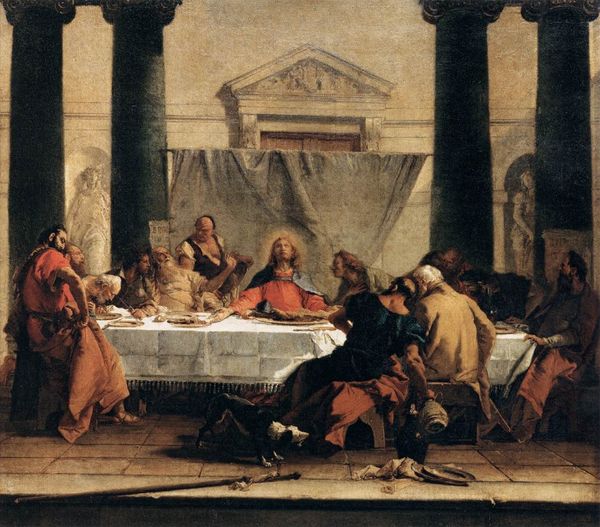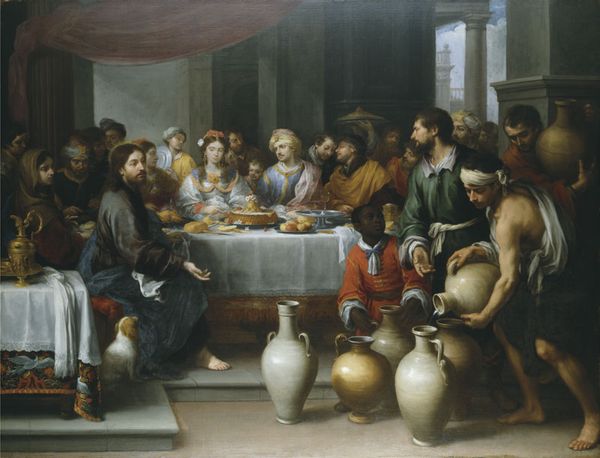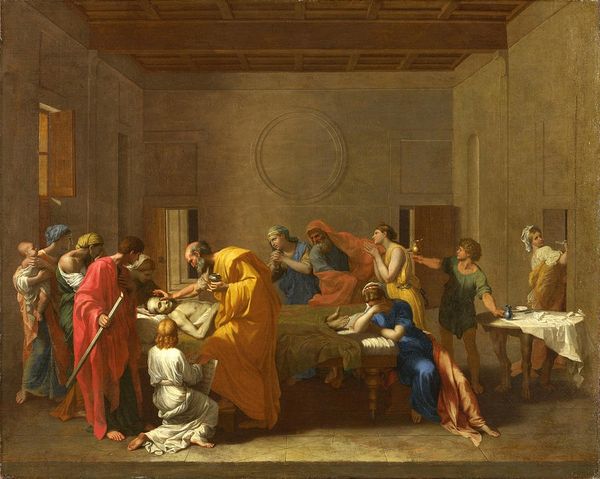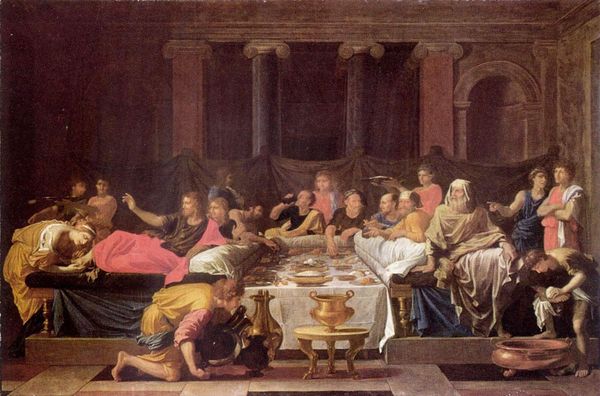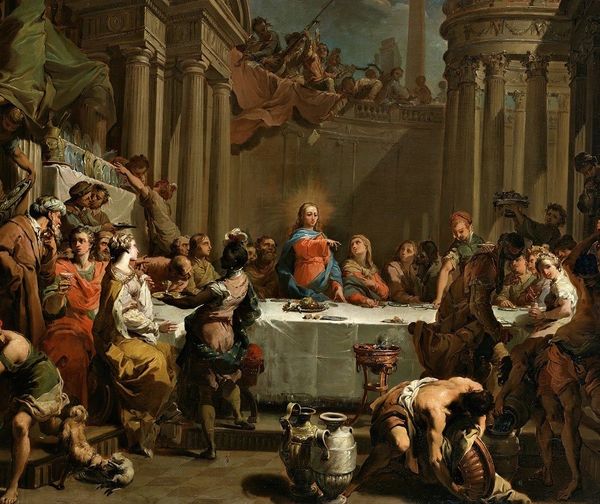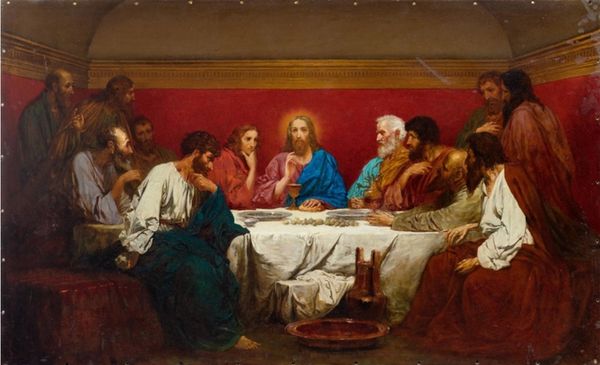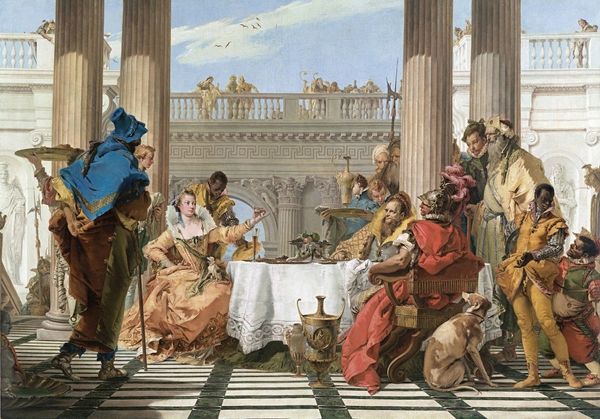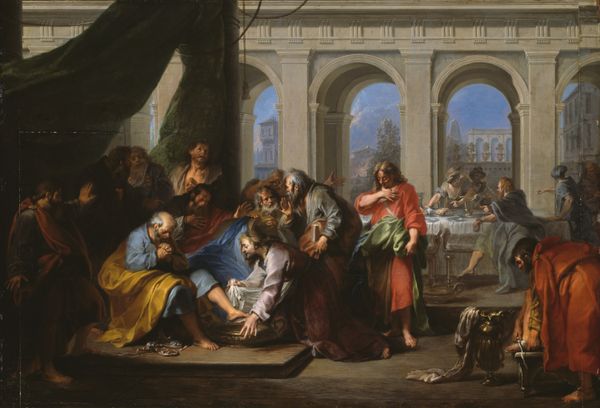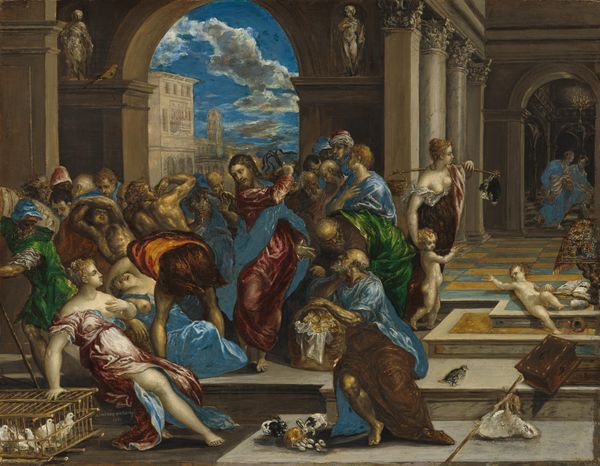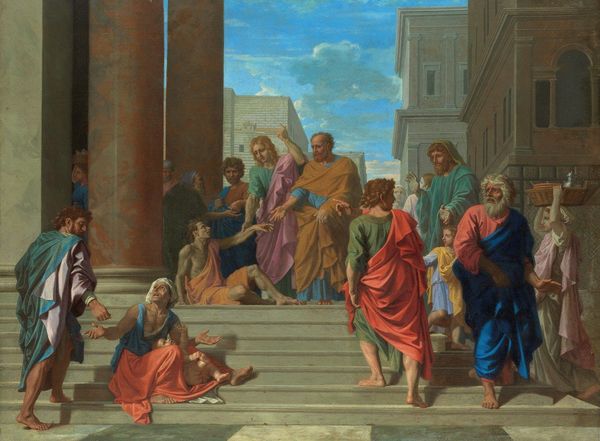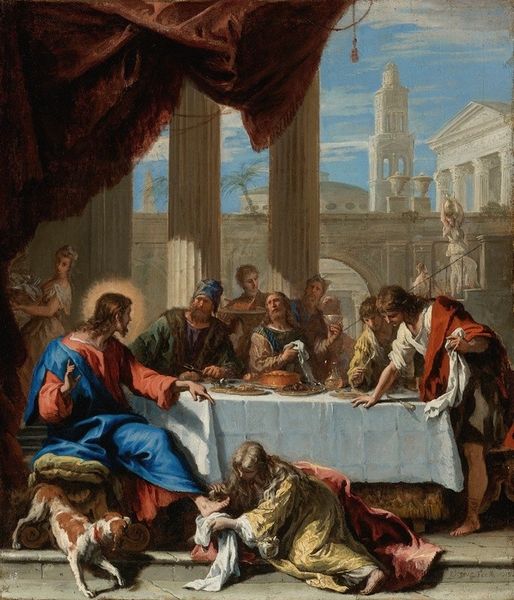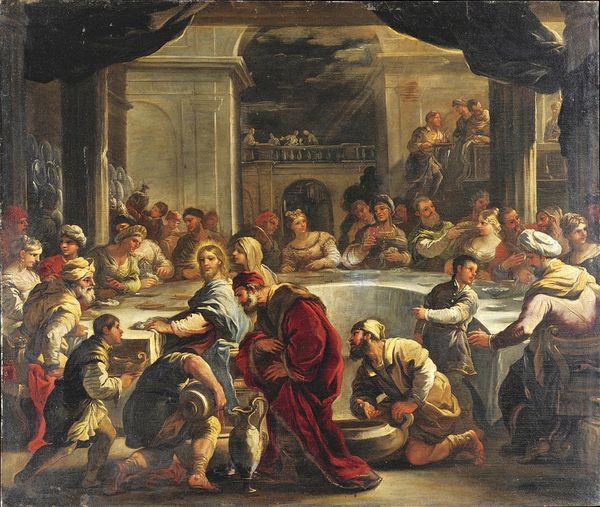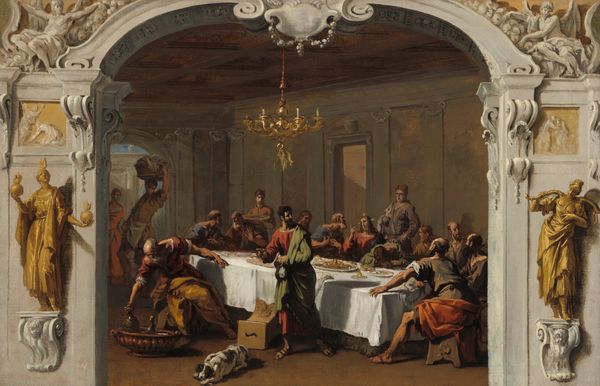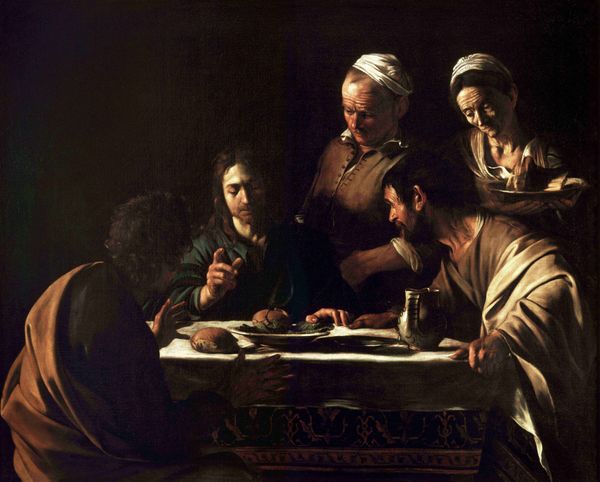
painting, oil-paint
#
baroque
#
painting
#
oil-paint
#
group-portraits
#
genre-painting
#
history-painting
Copyright: Public Domain: Artvee
Curator: Looking at "Last Supper," you can't help but notice Tiepolo's distinctive use of light, the architecture imposing as though staging a theatrical drama. What is your first impression of the scene? Editor: Immediately, I notice the down-to-earth qualities, and this domestic dog sniffing around. It draws me in – a contrast to the divine moment being captured. You get a real sense of ordinary life interwoven with the biblical narrative. Curator: Yes, a very Baroque element – intertwining the sacred with the profane! Here, we're observing Tiepolo tackling a classical scene. "The Last Supper", traditionally portrayed with a more solemn tone, becomes an almost earthly gathering. We must remember how patronage was transitioning with the growing wealthy classes. This might be one clue how to approach understanding the mood Tiepolo tries to create for the new audiences of paintings like this. Editor: I am intrigued by the making. Imagine Tiepolo in his studio, carefully selecting pigments to capture the subtle play of light across fabrics, and what is depicted on the plates for dinner? The tangible sense of the preparation involved in making something that seems effortless. Even the act of staging this meal for its intended religious purposes has parallels to the labor he does! Curator: The way the figures are dressed reflect his time and his environment, more than a literal representation of biblical clothing, giving it immediacy and making it accessible to a contemporary audience. And, let's note how "Last Supper" depictions served multiple functions. It wasn’t just art; these scenes reinforced doctrine. And how Tiepolo, in his version, handles that power dynamic, catering to new religious sensibilities of the viewers is significant. Editor: Seeing this oil painting up close, the materiality speaks volumes – the layered brushstrokes and the contrast between rough and smooth textures, capturing not only the grandeur but also a tactile experience, hinting at the earthly effort of creation! The social circumstances embedded within its materials—oil, canvas, labor, commerce— all speak to a fascinating interplay between skill, artistry, and cultural meaning that cannot be disregarded. Curator: A remarkable interplay it is. I’m always left considering the societal and religious shifts that would inspire such an earthly depiction of this holy event, and the audience for which it was conceived. Editor: Agreed! It highlights for me the importance of understanding the concrete factors shaping artistry, rather than solely considering what might be regarded "genius."
Comments
No comments
Be the first to comment and join the conversation on the ultimate creative platform.
